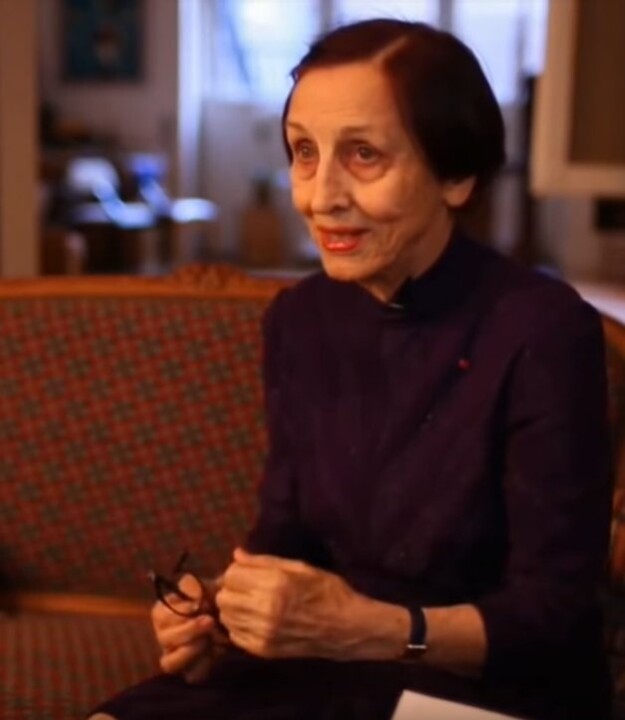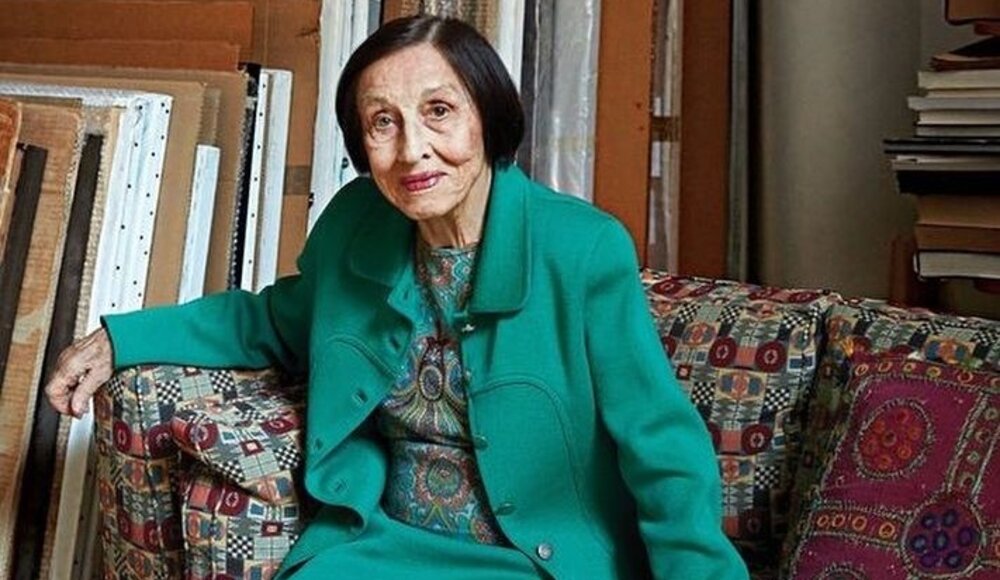Francoise Gilot was a talented painter, but her long, stormy relationship with a much older Pablo Picasso overshadowed her art. She died on Tuesday at a hospital in Manhattan. She was the only one of his many lovers who left him. She turned 101. Her daughter, Aurelia Engel, reported that she had died. She said that Ms. Gilot had been sick with heart and lung problems lately. Unlike his two wives and other lovers, Ms. Gilot was able to move on with her life after she broke up with him in 1953, almost a decade after the relationship began, even though they were 40 years apart in age. She kept drawing, showed her work, and wrote more books.
She married Jonas Salk, an American medical doctor who made the first safe polio vaccine, in 1970, and they lived in California for a while. Still, she was best known for her relationship with Picasso, especially after her book, "Life with Picasso," which she wrote with Carlton Lake and came out in 1964. It sold well all over the world, which made Picasso so angry that he stopped talking to Ms. Gilot and their two children, Claude and Paloma Picasso. If Ms. Gilot's book did well, the same is true of her art. Even in her later years, when her paintings were in more than a dozen places like the Metropolitan Museum of Art and the Museum of Modern Art in New York and the Centre Pompidou in Paris, the prices kept going up. Sotheby's held an online sale in June 2021 and sold her painting "Paloma at the Guitar" (1965), which was a blue-toned portrait of her daughter. It sold for $1.3 million. That was more than the $695,000 paid at a Sotheby's auction in 2014 for "Étude bleue," a picture of a woman sitting in 1953. And as part of a show of her work at Christie's in Hong Kong in November 2021, her abstract painting "Living Forest" from 1977 will sell for $1.3 million.

Marie Francoise Gilot was born in Neuilly-sur-Seine, a suburb of Paris, on November 26, 1921. She was the only child of Emile Gilot, an agronomist and chemical producer, and Madeleine Renoult-Gilot. In the 19th century, her family ran a fashion house. Eugenia, the wife of Emperor Napoleon III, was one of their customers. Marie Francoise's mother, who had studied art history, ceramics, and watercolor drawing, taught her art when she was young. Her father, on the other hand, had other plans. Ms. Gilot remembers him as a tyrant who made her write with her right hand even though she was left-handed. He wanted his daughter to work in science or the law, so he talked her into going to the University of Paris, where she got her bachelor's degree at age 17 in 1938. She went on to study at the Sorbonne and the British Institute in Paris and got a degree in English literature from Cambridge University. In June 1941, she decided to focus on art instead. She took individual lessons from Endre Rozsda, a Jewish Hungarian painter who was on the run, and went to classes at the Académie Julian, where Matisse, Bonnard, Léger, and Duchamp had studied before.
In "Life With Picasso," Ms. Gilot wrote about her first meeting with Picasso, which happened by chance in May 1943. She was eating at Le Catalan, a small restaurant on the rue des Grands-Augustins near Picasso's Left Bank studio, with her best friend Geneviève Aliquot and an actress named Alain Cuny. Picasso was at another table with Dora Maar, a Surrealist photographer who was his lover at the time. Picasso asked Cuny to put him in touch with the two girls. When he found out that they were both artists, he asked them to come to his studio. They did it together the next day and a few more times before Geneviève went home to the south of France. Ms. Gilot kept going to see Picasso, even though he seemed to like her more and more. She spent most of that summer in Provence with Geneviève. But in the winter of 1944, things got better between her and Picasso. He was 62, and she was 22. She remembered that she had been naked by his side. "He was very gentle," she wrote, "and that's the thing I remember most about him to this day: how gentle he was."
Dora Maar and Marie-Thérèse Walter, who had been his partner for a long time, were still in his life. Maar started to worry, and she was right to, that Ms. Gilot would take her place. In fact, Ms. Gilot agreed to move in with Picasso in May 1946. This was the start of a very dangerous time in her life. Picasso's paintings and pottery showed a new happiness—he painted Ms. Gilot as a nymph with his centaur—but he may have felt like he had won over her and started dating other women. In May 1947, she had Claude, and in April 1949, she had Paloma. She also kept drawing, but instead of copying Picasso, she used a colorful abstract style from the School of Paris after World War II. In April 1952, she had a show in Paris that went well. But by that time, Picasso had gone to southern France without her, and he didn't hide the fact that he was seeing other women. Finally, on September 20, 1953, Ms. Gilot told Picasso that she was leaving him because she was sick and sad.
"No woman leaves a man like me," he told her, according to what she wrote in "Life With Picasso." She wrote, "I told him that might be how it looked to him, but I was one woman who would, and was about to. A man as well-known and wealthy as he? He said he couldn't believe it. The last time Ms. Gilot and the artist had a fight, it was about "Life With Picasso." His friends and the French Communist Party both said bad things about her book. Picasso himself tried three times, but failed, to stop the book from coming out in France. Then he told Claude and Paloma he didn't want to see them again, and he kept his word until he died in 1973. By that time, Ms. Gilot had married Jonas Salk and was going back and forth between their home in the La Jolla neighborhood of San Diego and her studio in the south of France. In 1975, she wrote "Interface: The Painter and the Mask," a book about her life as an artist. The next year, she became head of the fine arts department at the University of Southern California, a job she held until 1983. In addition to Ms. Engel, she is survived by Claude Picasso, who is the director of Picasso Administration, which handles the artist's estate, Paloma Picasso, who is a fashion and jewelry designer best known for her perfumes, and four grandchildren. Ms. Gilot also had a small studio in Paris. She continued to work a lot and held shows in Europe and the US until 2021. But even though Picasso wasn't in her life anymore and had been dead for a long time, he was still a huge influence as a giant of 20th-century art.


 Selena Mattei
Selena Mattei